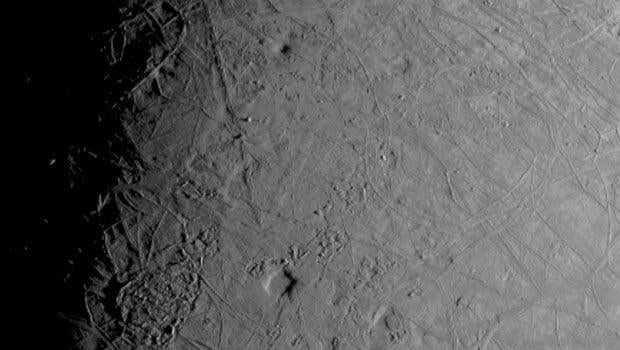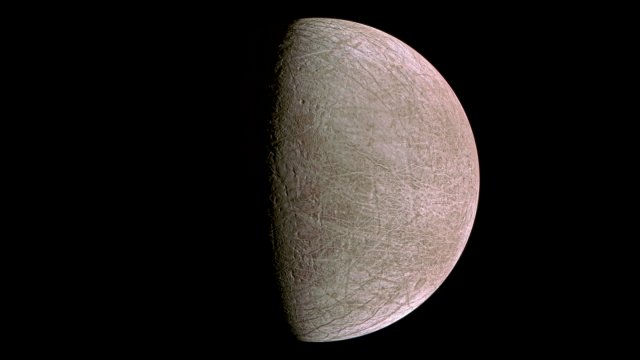NASA’s Juno spacecraft completed its close flyby of Jupiter’s moon Europa on Thursday, and the first images from the manoeuvre have now arrived on Earth for your viewing pleasure.
The images were taken yesterday at about 5:36 a.m. ET, from 352 km above the moon’s surface. That makes Juno’s close pass just a shade farther from Europa than the Galileo spacecraft’s flyby of the moon over 20 years ago, 351 km from Europa’s surface.

“It’s very early in the process, but by all indications, Juno’s flyby of Europa was a great success,” said Scott Bolton, Juno principal investigator from the Southwest Research Institute in San Antonio, Texas, in a NASA release. “This first picture is just a glimpse of the remarkable new science to come from Juno’s entire suite of instruments and sensors that acquired data as we skimmed over the moon’s icy crust.”
Europa is slightly smaller than Earth’s moon and of keen scientific interest. Its surface is a frozen wasteland miles thick, but scientists think that a salty ocean lies beneath its surface. If that is true, then Europa’s subsurface would be a great place for life to hide out. Just as the Perseverance rover on Mars is scouring a dried-up river delta for signs of fossil life, so too does NASA think Europa is worth investigating.

Juno picked out surface features — rugged terrain and possible impact craters — in its two-hour window zipping past Europa. Candy Hansen, a co-investigator on Juno at the Planetary Science Institute in Tucson, Arizona, said in a NASA release that the images will be compared to images of the moon taken on previous missions, like Galileo in 2000. The team can investigate whether any features of Europa’s surface have changed in that time.
Hansen added that the recent images will help replace older, lower-resolution images of Europa’s surface.
The images also pave the way for NASA’s Europa Clipper mission. That spacecraft is set to launch in 2024 and arrive at Europa in 2030. It will investigate the moon’s surface, atmosphere, and, most intriguingly, its interior.
Studying the moon’s interior will help scientists understand the structure of Europa’s ice beneath the crust, as well as where liquid water may lie beneath the surface.
Ultimately, the Europa Clipper will give NASA scientists a gist of the planet’s habitability, in the agency’s larger search for life beyond Earth.
